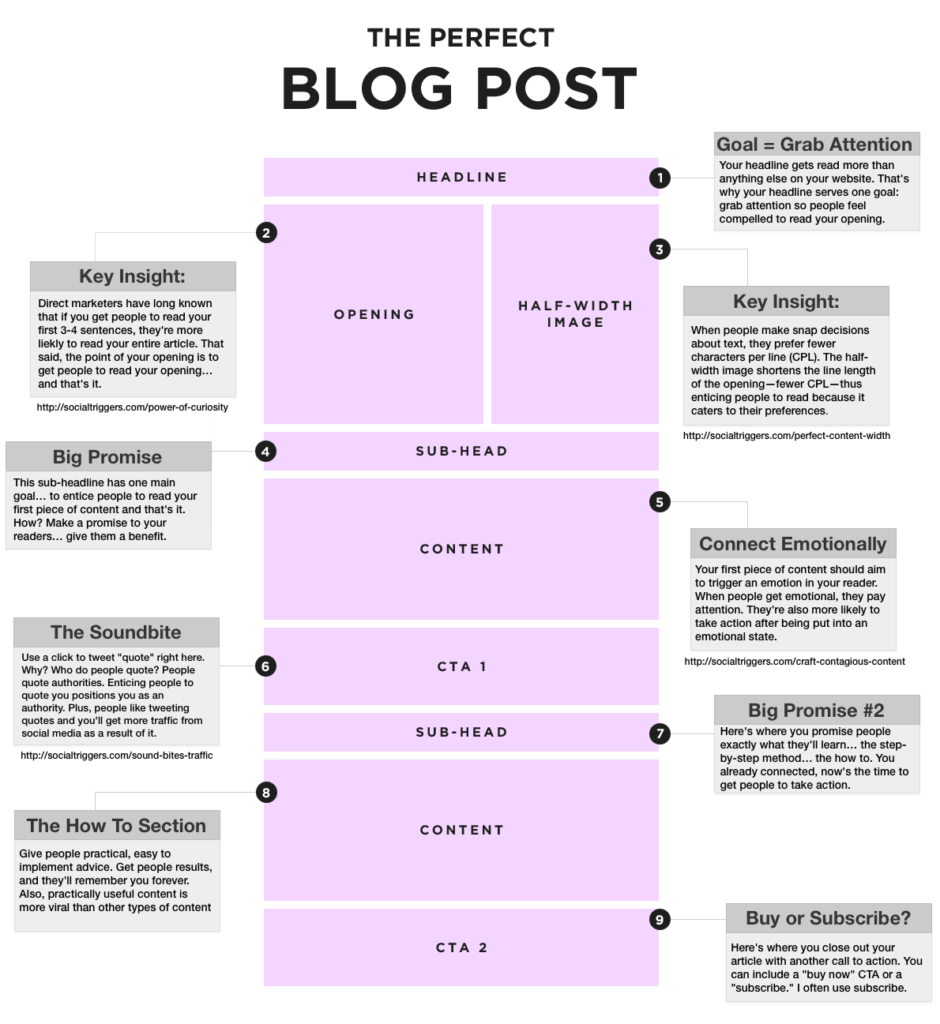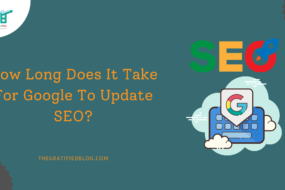
Welcome to the ultimate destination for learning how to write SEO-friendly blog posts that achieve high rankings. Within this comprehensive guide, we will equip you with all the knowledge necessary to optimize your blog posts for search engines.
We cover everything from selecting the most effective keywords to seamlessly incorporating them into your content and structuring your posts for maximum optimization. Whether you’re a novice, seasoned SEO expert, or blogger, this guide is tailor-made for your needs.
But first, let’s start with the basics;
What Is SEO?
SEO is the enhancement of a website’s visibility and ranking by optimizing search engine results pages (SERPs).
Now that you understand SEO, let’s delve into the tips to help your blog posts stand out in search engine results:
Tips On How To Write SEO Friendly Blog Posts?
Plan Before You Start Writing Content
Planning your content before diving into writing is a crucial step in creating SEO-friendly blog posts. By planning, you can ensure that your articles are well-structured, coherent, and optimized for search engines. Here’s why planning is essential:
- Organaization
Effective organization begins with planning, enabling you to map out the structure of your article. Through this process, you can pinpoint the essential points you want to address and determine their optimal presentation. This meticulous planning ensures that your content unfolds in a logical sequence, enhancing readability and making it easily comprehensible for your readers.
- Keyword Targeting
When writing content with SEO in mind, conducting keyword research and identifying the most appropriate and valuable keywords for your topic is crucial. By incorporating these keywords strategically, you can Increase your likelihood of higher rankings in search engines. Results.
However, it’s essential to go beyond using only the exact targeted keywords. Incorporating synonyms is highly beneficial to avoid keyword stuffing and enhance the readability of your content. Synonyms are words or phrases that have similar meanings to your targeted keywords.
For instance, if your article focuses on dog training, you can incorporate various synonyms such as “educate a dog,” “teach a puppy,” “housebreak a dog,” or “potty train a pup.”
However, you can find various tools available for conducting keyword research, such as Ahrefs, SEMrush, Moz, etc.
- Coherence and Consistency
You can maintain consistency throughout the article when you plan your content. This includes using a consistent tone, style, and voice. A well-planned article ensures that your ideas are presented coherently and effectively, leading to a more engaging and enjoyable reading experience.
- Time Efficiency
Planning lets you map out the main points, subtopics, and supporting details in advance. This helps streamline the writing process as you have a clear roadmap. You can save time and improve overall efficiency by eliminating the need to make frequent revisions or reorganize content while writing.
Create A Structure For Your Post
After planning your article, it’s essential to establish a clear structure that will effectively organize your thoughts and content. Using headings and subheadings is an excellent approach to achieving this. It keeps your article well-organized, enhances readability, and facilitates navigation for readers and search engines.
Consider the following example of a structured post:
- Introduction: Commence your article with an engaging introduction designed to seize the reader’s attention and offer a brief overview of the content. This introductory approach aims to captivate the audience from the outset and provide a glimpse of what the article entails.
- Main Body: Divide the main body of your article into logical sections, each focusing on a specific aspect or subtopic. Use headings to introduce these sections and provide a roadmap for readers to follow.
- Subheadings: Within each section, further divide the content into subheadings that delve deeper into specific points or subtopics. Subheadings allow for better organization and make it easier for readers to scan and find the information they seek.
- Paragraphs: Under each subheading, present your ideas and supporting details in well-structured paragraphs. Aim for concise and coherent paragraphs that flow smoothly from one to another, maintaining your article’s overall readability and logical progression.
- Conclusion: Conclude your article by crafting a summarizing conclusion that encapsulates the key points discussed. This concluding section serves to bring a sense of closure to your piece while reinforcing crucial takeaways for the readers, leaving a lasting impression.
- Author Bio: Optionally, conclude your article with a concise author bio to establish credibility and furnish readers with information about the author. This additional touch serves to create a connection between the content and its creator, enhancing the overall credibility of the piece.

Write For Readers, Not Search Engines
One of the most important things to remember when writing SEO-friendly blog posts is to register for readers continually. This means that your content should be interesting, informative, and valuable. It should be stuffed with something other than keywords or written solely to rank high in search engines.

If you write quality content that’s interesting and useful, the search engines will take notice and reward you with higher rankings.
Writing Compiling Headings & Subheadings
One of the most essential factors in writing SEO-friendly blog posts is your headings and subheadings. That’s why it’s necessary to include your keywords in these elements. Use keyword-rich phrases in your headings and subheadings to let readers and search engines know what your article is about.
Use Jasper For Heading & Subheadings
Ensure you only stuff your headings and subheadings with a few keywords. This will make your content easier to read, but it will also get you penalized by the search engines.
Optimize Your Slug And Meta Description
An SEO-friendly slug is the segment of a URL occurring after the domain name, pinpointing a distinct webpage. Crafting a slug optimized for search engines by incorporating relevant keywords and clearly indicating the webpage’s content is essential. A well-optimized slug helps search engines understand the topic of your webpage, and enhancing its visibility in search engine results can increase the likelihood of attracting organic traffic.
For example, if you’re writing an article about how to train a dog, a suitable URL would be – www.domain.com/how-to-train-a-dog/ (Always use your targeted keyword in the URL)
A meta description is a concise, succinct description of a webpage’s content visible in search engine results below the title. It holds substantial importance in drawing users to click on your webpage.
An adequate meta description should be compelling, concise, and accurately represent the webpage’s content. Incorporating pertinent keywords into the meta description can enhance its visibility in search results and the probability of users clicking through to your webpage. A well-crafted meta description can improve click-through rates and drive more targeted traffic to your webpage.
Always Go For long-form content.
One of the best ways to write SEO-friendly blog posts is to go for long-form content. This means writing articles that are over 1000 words. Long-form content is more comprehensive and covers a topic in-depth. It’s also more likely to rank higher in the search engines, as it’s seen as more valuable to readers.
Of course, writing long-form content can be a challenge. But if you focus on writing quality informative, and helpful content, you can write SEO-friendly blog posts that rank.
Use Visuals With Alt Text In Your Content
Incorporating visuals in your content is crucial as humans are highly visual beings, and visual elements can significantly enhance the impact and memorability of your message. Visuals can take the form of images, infographics, charts, or videos, and they serve to complement and break up the text within your article, making it more engaging and visually appealing.
When utilizing visuals, it’s essential to optimize them for search engines. One way to do this is by adding relevant keywords in the alt text attribute of your visual elements. The alt text describes the visual content, making it accessible to users with visual impairments and assisting search engines in comprehending the context and significance of the image.
Work On External And Internal Links
When crafting your content, incorporating external and internal links is essential for enhancing your website’s overall quality and search engine optimization.

External links refer to authoritative websites that are highly trusted and respected in their respective fields. By including these external links, you demonstrate to search engines that you provide valuable and credible information to your readers. Well-regarded sites like Wikipedia, Forbes, and The Huffington Post are authoritative sources that can add credibility to your content.
Conversely, internal linking entails linking to other articles or pages within your website. This practice offers several benefits. Firstly, it improves the user experience by providing additional relevant information to your readers and encouraging them to explore more of your content. Secondly, internal links help to increase the time users spend within your site, diminishing bounce rates and signaling the relevance of your content to search engines. Engaging and valuable. Lastly, internal linking contributes to your overall SEO strategy by distributing link equity across website pages and improving your content’s crawlability and indexability.
You can enhance your website’s credibility, user experience, and search engine visibility by strategically combining external and internal links within your content.
Here are eight tips that can assist you in crafting SEO-friendly blog posts that rank well in search engines.
Pro Tips

Achieving higher rankings for your blog posts in search results requires giving priority to a fast-loading website. Fortunately, you can utilize tools like GTMetrix and PageSpeed Insights to evaluate and measure your website’s speed.
Swift loading times are vital in providing an exceptional user experience, preventing visitors from prematurely leaving your site due to slow loading. It’s important to optimize images by compressing them without compromising quality to enhance loading speed. By minimizing the file size of images, you can mitigate their negative impact on your website’s loading speed.
Furthermore, consider utilizing a caching plugin to store static versions of your web pages, facilitating faster delivery upon user request. Additionally, leveraging a content delivery network (CDN) ensures efficient distribution of your website’s content across multiple servers globally, enabling quick access to resources regardless of the user’s location.
- Make Your Blog Post-UX Readable
Your blog post’s user experience (UX) is crucial as it directly impacts readers and search engines. A good UX ensures that your blog post is easily read, visually appealing, and informative, leading to better engagement and higher rankings in search engine results.
To enhance the readability of your blog post, it’s essential to break up your text into short paragraphs. Lengthy paragraphs can be daunting to readers and may discourage them from engaging with your content. Short paragraphs make your text more digestible, allowing readers to scan the content and find the information they want quickly.
- Update Content Regularly
Regularly updating your content is an effective strategy to keep it fresh, relevant, and appealing to readers and search engines. Adding new information, removing outdated content, and enhancing existing information ensures that your blog posts remain up-to-date and valuable for your audience.
Search engines value websites that consistently provide accurate and current information—updating your content signals to search engines that you are actively maintaining and improving your website. This can positively impact your rankings, as search engines prioritize sites that demonstrate ongoing efforts to provide the most relevant and reliable content.
FAQs
Q1. Is keyword density still crucial for SEO?
A. Keyword density, which refers to the percentage of keywords compared to the total word count, is no longer a significant factor in SEO. Instead, naturally and judiciously incorporate keywords into your content to maintain readability and relevance.
Q2. Should I use social media to promote my SEO-friendly blog posts?
A. Absolutely! Social media platforms can expand the reach of your blog posts and generate traffic to your website. Distribute your blog posts on pertinent social media platforms. Channels, engage with your audience and encourage social sharing to expand your content’s visibility.
Key Takeaways
Now that you know and understand the essential elements for creating SEO-friendly blog posts, it’s time to implement them. Begin crafting your blog content using the tips and strategies above to drive positive results.
Feel free to reach out if you have any additional questions or need clarification on any of the above topics. We are here to assist you and provide the necessary answers and guidance.
Thanks for reading 🙂
.








No Comments